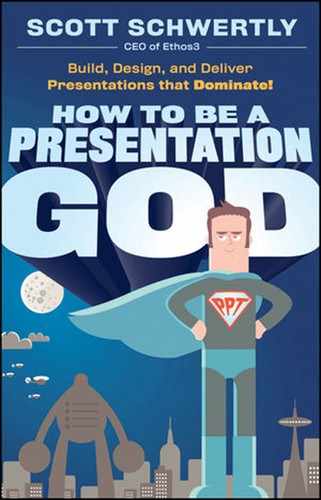Foreword
Readers of my column and my blog know that the need to have regular human moments at work is similar to the need to stand up and stretch on an airplane: your well-being depends on it. On top of that, a workday with regular face-to-face contact is more energizing than a day full of contacts exclusively via computer and phone.
Working at the computer or talking on the phone for a long time is as exhausting as staring at the TV. The brain starts to crave rest from input overload and fuel from human contact.
So when you're feeling tired at work, try creating a human moment for an energy boost. It doesn't have to be earth-shattering and intimate. It can be short and professional. You just need to be paying attention.
Even better: use all those meetings you have every day to create your own opportunities for such human moments. Scott's giving you the driver's license crash course right here—he'll show you how to speak like you want to change the world. He's got monsters to fight, and you get to be the hero. Use what Scott explains so well to connect with just one person in the audience (maybe that attractive one from Accounting). Just look him or her in the eye, right? That's the usual advice.
But it's so hard to look someone in the eye. Especially if you don't have confidence from knowing what you're doing up there. And most public speakers are not particularly naturally engaging. That's why going after just one person is a great way to test yourself—to see if you're really connected—by forcing yourself to look at one single person while you make a point.
This is a way to know for sure if you are connecting with your audience when you talk. Sticking with one person for each point is painful and nearly impossible if you are not truly connecting your material to that person.
But what do you do when you see you aren't connecting? Some people ignore it or trick themselves into thinking there is a connection: Think about all the deadly PowerPoint presentations you've sat through where the speaker was oblivious to boredom. Or just read on—Scott makes a great read out of all the time you've wasted on the bad presentations you've suffered through.
Comedian Esther Ku says the best thing to do when you can tell you're not connected is to acknowledge it. "If a joke fails, I poke fun at myself so I show the audience that I'm aware of what's going on." The audience doesn't need constant genius; the audience needs to know you are clued into how they are reacting.
After you've absorbed what Scott's offering here, you'll seem like a constant genius, a presentation god, ready to connect, because you'll have stopped wasting the audience's time.
You'll be focused on just one person and thereby connect with everyone. And most important, you'll have learned to respect yourself and your audience. What more can you ask from such a human moment?
—Penelope Trunk
Founder of Brazen Careerist
